-
Posts
1,687 -
Joined
-
Last visited
-
Days Won
41
Content Type
Profiles
Forums
Events
Posts posted by Syzygies
-
-
I bought an electric pressure washer to maintain (clean before oiling) our ipe deck. Now I use it whenever I don't want to get my hands messy washing dishes. The gas range grates ... the Komodo Kamado grates ... a misused molcajete ... the possibilities are endless. I made sure to set it up so access was a minute or two, and if I was really serious I'd build it into the side of the garage, the way some houses once came with central vacuums.
-
 1
1
-
-
7 hours ago, tony b said:
Unfortunately, the challenge to those of us with older KKs is that you can't run Dennis' smoker and the Guru fan at the same time - it's a shared port. Of course, Dennis solved this problem with the later models with separate ports. He's willing to ship the parts to folks with older KKs to drill that separate smoker port, but I'm waaaay too nervous about doing something like that to my KK. Others have done it successfully - I just won't be one of them.
Wouldn't it be easy to make an adapter?
A better solution would be to mod the rear door using a Guru adapter: BBQ Guru Adaptors
I'm actually rather surprised that Dennis doesn't sell this as a smoke generator accessory.
-
 3
3
-
 1
1
-
-
9 hours ago, jeffshoaf said:
I made a smoker pot using the stainless 1.6 liter Stowaway pot from MSR
I've had my eye on that pot for years. Thank you!
I don't really mind the flour paste thing. It's actually a bit romantic, like using flour paste to help pots that don't quite fit right in Morocco. For my steamed dumpling experiments, I much prefer a bamboo steamer to metal, it's a live drawing reflecting the hands we have in common with primates. And my earliest, never-reported experiments with alternatives to a cast iron Dutch Oven ended in culinary disaster: They came apart, caught fire, and infused my food with creosote.
Still, that pot looked promising. I have other interests and a psychotic number of branches open to explore, and a cast iron smoke pot works. Sometimes I actually find the maturity to leave well enough alone, so I never tried it.
Early on, there was a "smoke bomb" branch of this research. People would commission a stainless steel tube, threaded at both ends, and stainless steel caps. Think "pipe bomb". They'd drill the requisite three 1/8" holes in the middle somewhere (I feel like this is some Monty Python movie). These were expensive. I suppose once one had found one and paid for it, it was easier than flour paste. I like rustic.
Of course, Dennis reacted by building a professional device. If I were to make any change, it would probably be to buy his smoke generator.
-
 4
4
-
 1
1
-
-
Second try's a charm. Based on my bread baking recipe, I guessed a Bao dough recipe based entirely on freshly ground flour, 2:1:1 Soft:Red:Rye, and raised the hydration. Handled like a charm. Back to my advice to just cook BBQ as I know best how to do, ignore any proposed techniques from books on producing filling.
-
 6
6
-
-
Ok, first Char Siu Bao experiment in 40 years. Needs work but very promising category.
Using freshly ground flour was a distracting challenge, but that actually worked. The primary issue is a savory filling.
We know how to make spectacular BBQ on a KK. And any Chinatown sports many places that make spectacular Char Siu Pork; they learned from previous generations.
What any cookbook suggests is neither. Don't be pulled off your game. Make the best BBQ you know how, exactly as you already know how, then sauce it appropriately as a Bao filling. That's how any restaurant works: They respond to the equipment they have.
This is an awesome way to eat BBQ.
-
 10
10
-
-
We've been making our own masa for corn tacos. It's work but very much worth it. The story goes that when Masienda's Oaxacan corn reaches the taco griddle at an upscale Mexican restaurant, the aroma makes the Mexican staff tear up with childhood memories. It's really that good (and Anson Mills doesn't come close for this application):
A shopping list for a full setup:
- Heirloom Yellow Bolita Corn (Oaxaca) (and/or other varieties)
- Chef-Grade Cal
- Chef-Grade Masa Flour (Harina) White
- Tortilla Press by Doña Rosa (this is better than the one you have)
- Premier Small Wonder Table Top Wet Grinder 1.5 Liter by SS Premier (as recommended by Oaxaca: Home Cooking from the Heart of Mexico)
One cooks corn with cal and water, then lets it sit overnight, to make nixtamal. Recipes for this are all over the map, and no one accounts for the weight of the corn and the water, unlike the brine recipes in Paul Bertolli's Cooking by Hand. I've found that 4:1 water:corn suffices for any corn variety, and 0.5% cal by weight is a minimum effective dose. For example, 360g corn, 1440g water, 9g cal.
Cooking times are also all over the map. One wants to see a partially translucent but not mushy kernel when you cut one open to check. After short cooking times Laurie experienced digestive distress. We've settled on using an old slow cooker on a four hour external timer. It only reaches an effective temperature in the last hour, and the corn comes out right.
One then rinses the kernels multiple times to get rid of the dissolved outer layer, then grinds the nixtamal to make masa. Traditionally one used a stone metate; this took hours and a shower. Mexicans often use hand-cranked metal grinders, but this requires two passes, and in Youtube videos they finish on a metate. It is rumored to take hundreds of pounds of corn to stop seeing metal fragments from these grinders.
Steve Sando of Rancho Gordo imported a Nixtamatic, a powered Mexican machine. Masienda sells the Molinito, a $1750, 26" x 13" x 19" countertop commercial unit. Bricia Lopez, in Oaxaca: Home Cooking from the Heart of Mexico recommends an Indian wet grinder. One grinds for 40 minutes, scraping down as needed, after adding 1/3 water by weight. This yields a too-wet masa that one corrects with masa harina; the masa still comes out much better than straight masa harina, even Masienda's. A wet grinder is easy to clean.
I cannot speak highly enough of Masienda's tortilla press. I actually had a project languishing over a decade to finish a cherry wood press. Now there's no point. The Masienda press is capable of greater force than any other home press I know. How does one avoid a tortilla thinner at one end? Easy, press, rotate, press. How does one easily peel the tortilla free? Press inside a slit open plastic food storage bag. Lift the plastic off one side. Flip, lift the plastic free from the other side.
While I own a comal, I vastly prefer cooking tortillas on a Baking Steel, in a pipeline three tortillas deep, flipping every minute at around 500 F. Restaurants use restaurant griddles the same way. It is essential to lightly season the griddle before starting, or wet tortillas will stick. Nothing beats a Dexter Russell 16160 Traditional Series 6" x 3" Hamburger Turner for flipping the tortillas.
This is all truly worth it.
-
 4
4
-
 2
2
-
I started a thread on making nixtamal from Masienda corn, to consolidate what I've posted on other threads such as here:
Nixtamal / masa / tacos from Masienda Oaxacan corn
-
 2
2
-
-
On 2/20/2021 at 11:14 AM, BOC said:
I thought the same tony b. Tekobo rocking a Ferrari in the demolition derby. I’m not mad at you though tekobo, can’t say I wouldn’t want one.Wow this thread is cracking me up. Thanks for all the love. 3 holes 1/8" each was a spontaneous choice, though in hindsight seems close enough. I have the first 2 quart smoke pot, and I'm sure it was $20 at some drug store. Crime of opportunity.
-
 1
1
-
 1
1
-
-
This is a personal question; everyone has a different take on what quality of smoke tastes best.
I devised the smoke pot many years ago. Once my wife tasted the difference, there was no going back.
I continue to be tempted by the Hot/Cold smoker. For me those would be the two choices. My KK is old enough that the Hot/Cold smoker would compete with my BBQ Guru for the single port. With a newer KK the Hot/Cold smoker is probably far easier and more reliable. There's an art to getting a smoke pot going. I've mastered it (school of hard knocks) but I appreciate that it's not obvious.
-
 4
4
-
-
1 hour ago, tekobo said:
Now I love you and I hate you, too.
Netherton Foundry - Black Iron Tortilla Press created for KOL restaurant
-
7 minutes ago, tekobo said:
I love you and I hate you
Ooh! My kind of relationship!
7 minutes ago, tekobo said:The Macienda site that you posted earlier does describe doing this at home with an ordinary food processor. There is also the option to do it manually using a matate. Have you tried one of those?
My friend who turned me on to fresh masa years ago tried a food processor and was disappointed. Think about it; why would Indians buy wet grinders if food processors did the trick? He ended up borrowing my Vita-Prep commercial blender, using too much water, and thickening back to masa with masa harina. Half and half is still better than nothing. This by the way is the way to make a Thai curry paste; just borrow some of the coconut cream you'll later fry in, and let the Vita-Prep replace an hour's work with a mortar and pestle.
I used to own a Sumeet Indian food processor. It felt like India. It worked great while it lasted, but even a Sumeet isn't up to nixtamal.
My first mill for grinding flour (for flour tortillas and chapatis, of course) was a Samap Manual Grain Mill. It would take me half an hour to produce enough flour for a batch of pasta, then I'd need a shower. No, I haven't tried a matate. Even Mexicans just finish on a metate, after doing the bulk of the work with a hand mill.
-
 1
1
-
-
On 2/15/2021 at 2:27 AM, tekobo said:
If it is the latter I would like to know how you do it and then I will worry about how far down this rabbit hole I want to follow.
Oh come on, you know me, was there ever any doubt?
Quote“Once we all get the courage to just follow through on our instincts like Malkovich has,” observes Sean Penn in a mischievous cameo, “I think that a lot of us will move in to puppetry.”
I started a thread on making nixtamal from Masienda corn, to consolidate what I've posted on other threads such as here:
-
 2
2
-
-
I own several thicknesses of Baking Steel, a Fibrament-D stone, and a KK stone from Dennis.
The Baking Steel rocks as a burger griddle, but then you wreck it for anything else. I dedicate it to tortillas from house-made masa from nixtamal from corn from Masienda. For this purpose their Oaxacan corn beats Anson Mills. Fresh tacos is quite the process but entirely worth it. Masienda primarily targets high-end Mexican restaurant; there are stories of Mexican chefs in tears remembering their childhoods, when they first smell tortillas cooking from this corn.
We also use the Baking Steel stovetop for sourdough English muffins, which doesn't wreck its seasoning.
Fibrament-D and the Dennis KK stone are similar, but the KK stone fits better. There's PhD science behind baking stones, and Dennis has entirely mastered this physics. I remember old threads where we discussed stone characteristics. There are two primary issues: How long a stone takes to heat up, and how quickly it returns the heat to pizza. Think superball bounce. Fibrament-D used to resist selling thick stones to consumers, because unlike a pizza shop where the oven stays on all day, a thick stone takes too long to heat up. And people do worry about fuel consumption heating a thick stone in a KK. I don't; the KK does pretty well once it reaches cruising altitude, and I consider it an honor to get to supply my KK with fuel. The Dennis KK stone is thick, and I don't consider this an issue.
A Baking Steel is ideal for Neopolitan pizza, nothing else. Neopolitan pizza cooks extremely fast. One can fall into the trap of believing that's the only kind of pizza, the platonic ideal to which we should all aspire. I don't, I have too many other variables in play, like grinding my own flour. I vastly prefer baking pizza or bread on stone.
If you do go down the Baking Steel rabbit hole, don't congratulate yourself just yet. There are those who prefer aluminum or copper. Learn why, and be prepared to defend your choice.
-
 5
5
-
-
By now I've bought nearly everything they sell. The draw was the best Sichuan bean paste obtainable outside China. Their best vinegar, best soy sauce I had only dreamed about before. I have nearly every chile they sell, multiple grades of Sichuan pepper.
I'd like to think my Chinese cooking is better because of me, but I know it's sourcing.
-
 1
1
-
-
2 hours ago, 5698k said:
I don’t think you should spend real money on a bread knife, they can’t be sharpened properly. Go cheap, and replace when necessary.
We paid some guy who parks his sharpening van at a farmers market. He had equipment that could handle bread knives. Stunning difference. I needed to dull the tip, it was destroying our butcher block.
-
 2
2
-
-
My current sharpening rig, $640, duplicated in two kitchens:
- Shapton Glass 4pc Set 500, 1k, 4k, 8k
- Shapton GlassStone 2000 Grit
- Shapton Sharpening Stone Holder
- Tojiro Sink Bridge
- Atoma Diamond Sharpener Super Fine - #1200
The belt-and-suspenders stone holding approach saves time. Some would say my diamond stone is too fine and should cost more, but I'm happy with this choice. I use it to regularly (often between knives) scrub my water stones clean. Flattening is a side effect.
I also own a strop and diamond paste but I don't always bother, and I'm not sure I can tell the difference. Showering adequately daily beats showering brilliantly once a week. The main issue here is to make sharpening as easy as possible.
The woodworking quickie is mine, so I can put stones away wet.
-
 3
3
-
19 hours ago, 5698k said:
I actually use shapton glass stones, they work beautifully. The TS Prof will use any stone for edge pro, so there’s lots of selection. Assuming an edge that’s not damaged, I go 1k, 2k, 4K, 8k, and then strop. I have a tendency to use a really shallow angle, about 12°, then micro bevel at 25°. This is for my carbon steel Japanese kitchen knives, for more utilitarian knives I stop at 2k and don’t worry about the micro.
Wow, I'm on the brink. Just because I can sharpen freehand doesn't mean I should. I like precise control.
-
 2
2
-
-
3 hours ago, tekobo said:
After a couple of days of research and debate here we dived in and bought the TSPROF K03 sharpening system.
That's a beautiful kit. I'm into water stones (and their feel just after "cleaning" by flattening with a diamond stone). I'd be seriously interested if the TSPROF was compatible with keeping a water stone wet.
There's a logical trap you can easily avoid, by tweaking the angle control as you work. The assumption is that knives need to be sharpened at a fixed angle, and that people are no good at keeping a fixed angle without a guide. The risk here is that the guide is too good at keeping a fixed angle.
A standard question in virtually all situations is "which way do you want to miss?"
I learned this as a kid: One bushwhacks towards a camp on a stream by aiming to one side, so when you reach the stream, you know which way to turn.
Here, on the finer stones, you don't want to roll away from the edge of the blade, polishing the shoulder rather than refining the edge. It is however ok to roll a tiny bit forward onto the edge. For a high end wood plane like a Lie-Nielsen, one sharpens so frequently that people favor two angle steps as a matter of efficiency. The idea of a primary bevel and a secondary bevel is explained in their Sharpening Instructions PDF. Woodworking is more demanding than cooking; it's always interesting to learn from communities where the ideas really matter.
When people sharpen free-hand, we do it by feel, a multi-sensory version of listening. We have no idea what's really happening to our angle control, but chasing the proper feel as one progresses through finer stones works in practice. We're all riding a bit up onto the edge, rather than polishing the shoulder. This is the real reason I like to flatten my stones so often: a ridiculously clean stone has a feel that provides better feedback.
Ok, so what happens using a TSPROF, if you're not tweaking angles like a guitar player bending notes? At first, you're not riding up onto the edge at all. This is more work, but the TSPROF is so good at work that you won't notice. But over time, the coarser stones wear more quickly than the finer stones. They'll look the same thickness but they're not! Geometry question: Which way does this miss? Will you tend to ride up onto the shoulder or the edge as you move to finer stones?
This becomes clear if you imagine exaggerating the effect. What happens to angle as the stone gets thicker? One can offset this by tweaking the angles as one works. There doesn't have to be a 5 degree difference in bevels, like for wood planes. A small fraction of a degree makes a big difference.
-
 2
2
-
-
On 1/20/2021 at 5:33 PM, 5698k said:
There’s been posts about Japanese steel, white and blue are the most prevalent in the carbon steel world, the difference is basically hardness. Blue and white are different..no one is “better”than the other. Blue is harder, holds its edge longer, assuming everything is equal, it’s also more brittle, making it a bit more fragile. White steel is a bit softer, less brittle, but also easier to sharpen to a screaming edge, to the point that there are plenty of forgers that will only use white steel.
This paragraph wins the thread for me. I've seen charts but this is an opinionated but probably right analysis of what the charts are trying to say.
-
 1
1
-
-
On 1/20/2021 at 9:02 AM, Braai-Q said:
I think this thread has taken on a life of its own. Sorry @Troble, hope you don't mind.
All forum posts on all forums are for the future benefit of others; this isn't a private help desk.
I've talked before over a thousand people multiple times, and given advice to others on doing so: It isn't about you!
In pre-pandemic times, people would gather together like wolves in a hole, and have someone stand in front. It's a role. It's easier to play this role if one sees it as such.
The OP is the conversation starter, that's all. Thank you! Others will find this great thread, and learn what they need from it.
-
 1
1
-
-
8 hours ago, Braai-Q said:
Bryan Raquin also produces some very lovely knives but they are very difficult to get hold of.
Wow. I'm beginning to wonder if the 196 USD I spent to have a Tojiro DP 3-Layer Chinese Cleaver 225mm delivered from Japan was chump change, and VG-10 steel is a compromise I shouldn't be making?
I can imagine spending 400 USD on a cleaver (Chuka Bocho), perhaps blue or white steel, if the difference would really be apparent. Or something like Bryan Raquin's Nakira 195 if it's ever back in stock. I suspect there are some strong opinions here...
Being a mathematician has trained me to hear when people fall into logical black holes. "Seasoning is polymerization, so let's use flaxseed oil" misses the other components of restaurant abuse. Getting a perfect edge on a knife? Such an obvious goal, it has to be wrong sometimes. A serrated edge is better at slicing, and serration is a matter of degree, even the edge after an 8000 water stone is irregular at sufficient magnification. I've been meaning to get a good USB microscope for knife sharpening, coffee grinding, to make these issues obvious. I certainly adjust my technique over the lifetime of a sharpening cycle, increasing my slicing motion as the edges fade. And a chip in a favorite knife? It's a feature, not a bug!
-
 3
3
-
-
I maintain two kitchens (one I haven't seen in two years because of the pandemic). What do I consider essential? The acid test is whether I buy a tool for both kitchens.
I have long relied on three sizes of Fujitake Japanese chef knives for nearly all knife work. There are similar brands; the key features for me are an ergonomic (not an eccentric, traditional) handle, and the use of the popular VG10 steel, which I don't manage to wreck and I've figured out how to sharpen. (Steel is a continuum; debating whether a particular composition is stainless or carbon is like debating the difference between triple cream cheeses and cultured butter. Yes, the question is obvious if one has only seen extremes, but there are also choices in the middle.)
After a pre-pandemic trip to Japan I started finding Japanese sources for Chinese tools. For example, I've bought many woks over the years, but this flat or round bottom wok from GlobalKitchen Japan is the first wok I've loved. So I considered their offerings when researching cleavers, and ended up buying a Tojiro DP 3-Layer Chinese Cleaver 225mm. Same construction as my other favorite knives, I know how to sharpen this.
Anthony Bourdain famously recommends using a single chef's knife. Somewhere he said about his restaurant days "They can't steal the knife in your hand". (This wasn't Kitchen Confidential; I looked.)
I've barely used any other knife since the cleaver arrived. To be clear, I've left behind a comet's tail of abandoned cleavers as long as my abandoned woks. Like the new woks, this is the first cleaver I've loved, indeed that I haven't actively despised. There's something about its heft and the exact shape of its cutting edge that allows me to get more done, more quickly.
If I managed to burn down my prejudices, I feel comfortable suggesting that others should burn down their prejudices.
I do cringe when I see cooking videos where a famous author politely suffers the green germs in her host's garlic, as they both wield cleavers for everything. If I think of it, I might switch to one of my Japanese chef's knives for a head of garlic. I'm however just as fast with the cleaver, including using the tip to remove germs. I can see how relying on a cleaver might discourage this, but it doesn't have to.
I have butcher block counters for active cutting. My French cooking teacher had a trough more than an inch deep in his. We're not there, but I can tell that mine has seen an order of magnitude more abuse since I switched to the cleaver. My Festool shop vac works well enough to use indoors, so I can easily restore a mirror finish to my butcher block with Mirka Abranet sanding fabric and a Festool finishing sander.
My sharpening setup (Shapton Glass stones and various gear to suspend over the sink) cost more than most knife sets, and I've seen simpler systems that look appealing. Whatever one does, one needs to ask the "Who cuts the barber?" question. I don't sharpen enough to actually go through a stone, and the first few passes after flattening a stone with a diamond stone feel like waterskiing a lake at dawn, so I flatten between knives.
-
 1
1
-
 1
1
-
-
Expanded response below in thread.
-
 2
2
-
-
6 hours ago, tony b said:
There's a name that we haven't heard in a very long time! Guess that makes me an "old-timer" here - LOL!
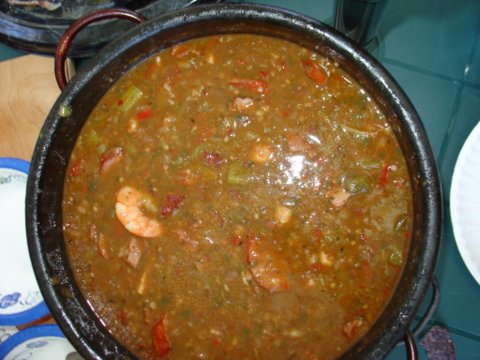
I met Jiarby in person at a POSK cooking competition in Sacramento. His chili and my gumbo tied for some silly non-prize. I was most impressed by his Rambo-style charcoal lighting technique. We're not talking weed burner, this flame thrower wouldn't have been out of place in the US-Vietnam war. And Glenn's a big guy, it all made a picture. We stayed in touch. Great guy.
-
 2
2
-



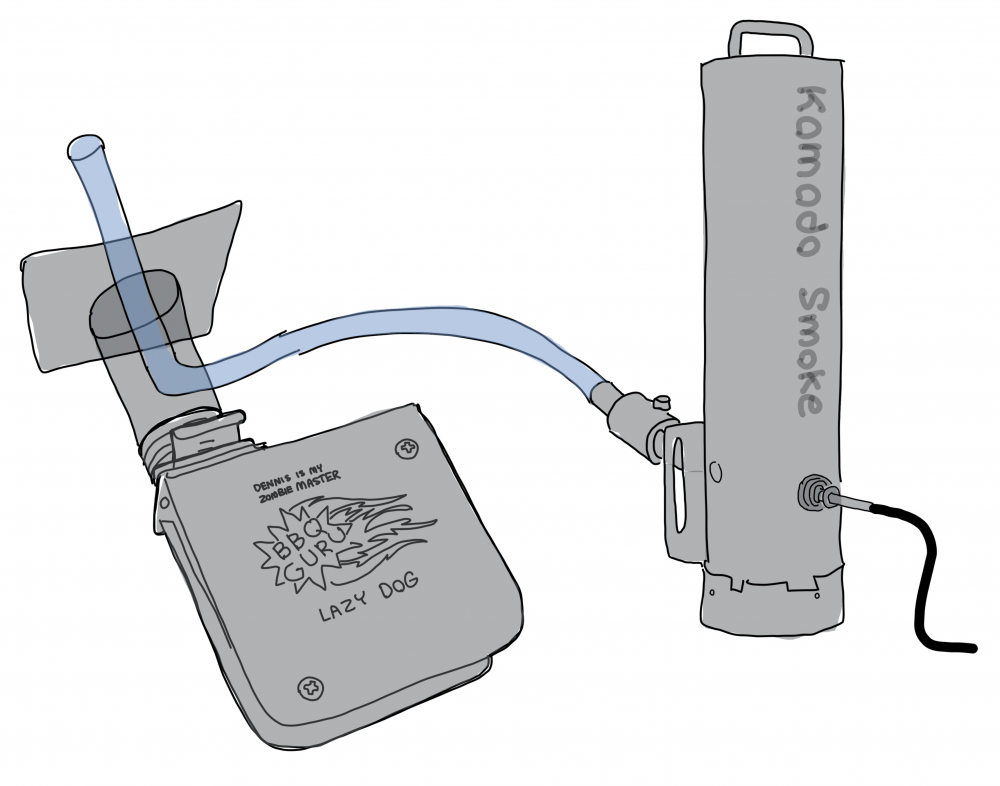
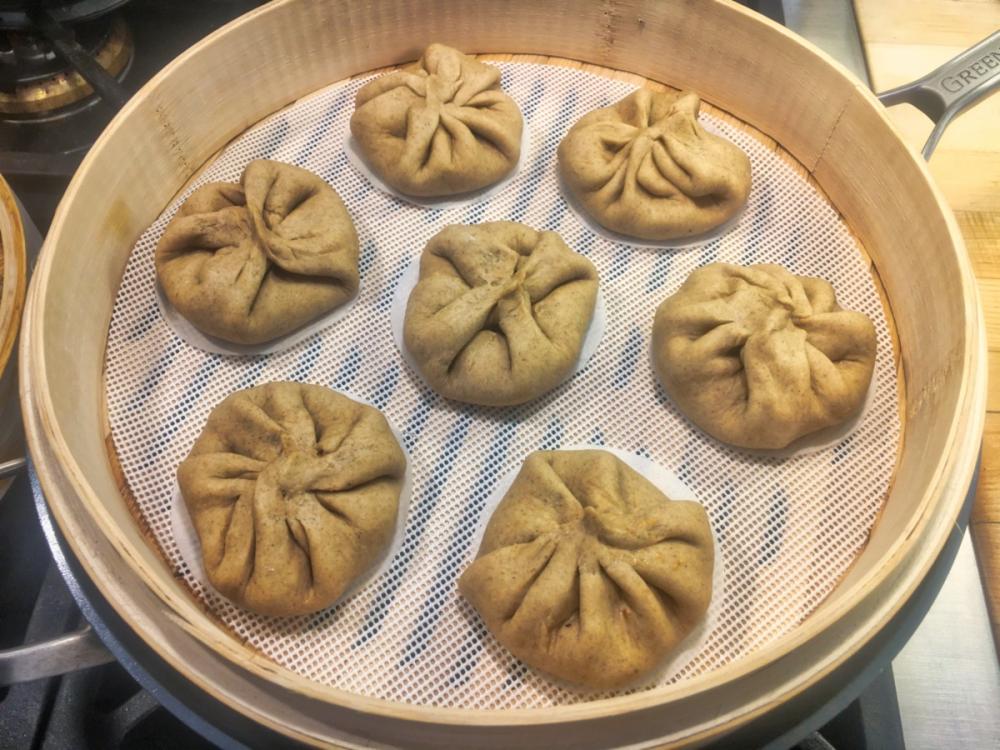
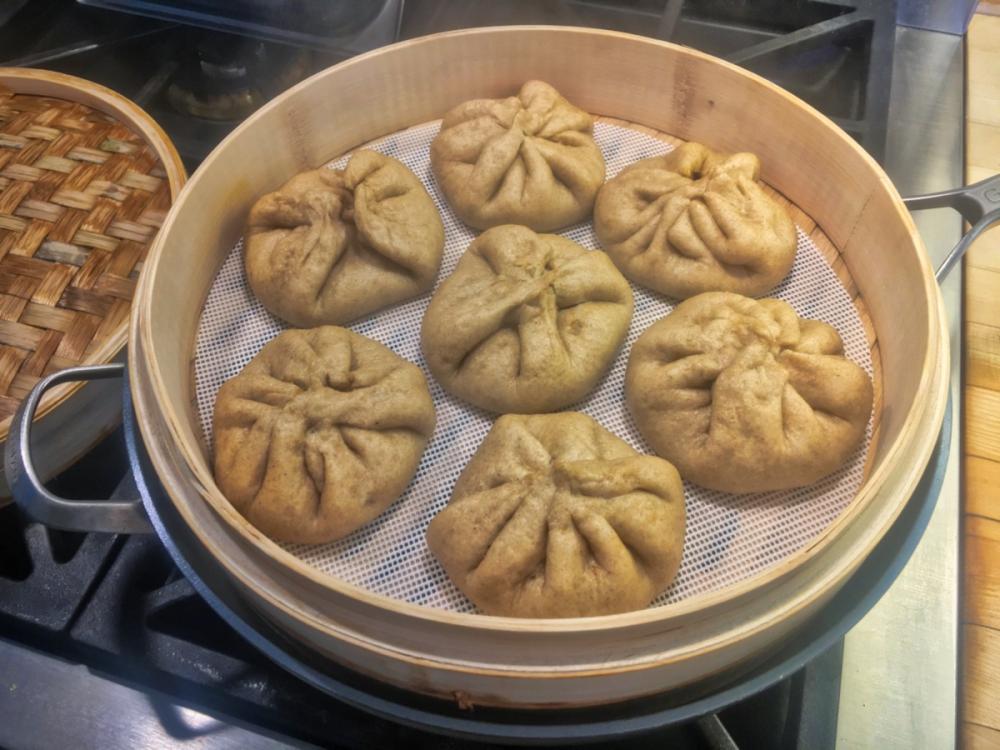
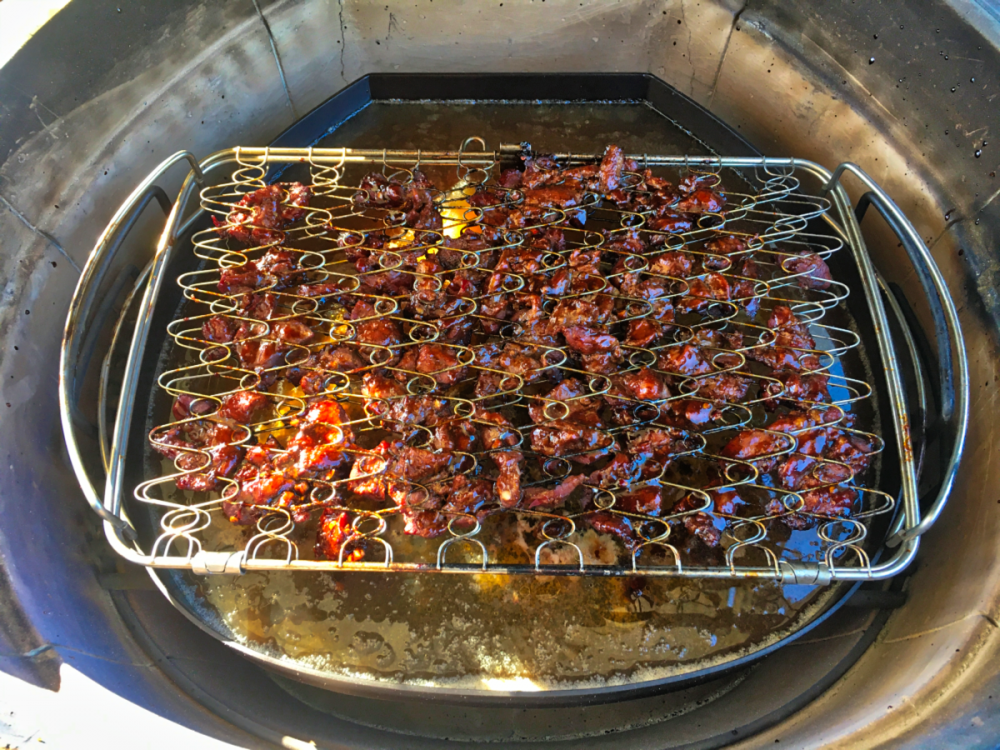
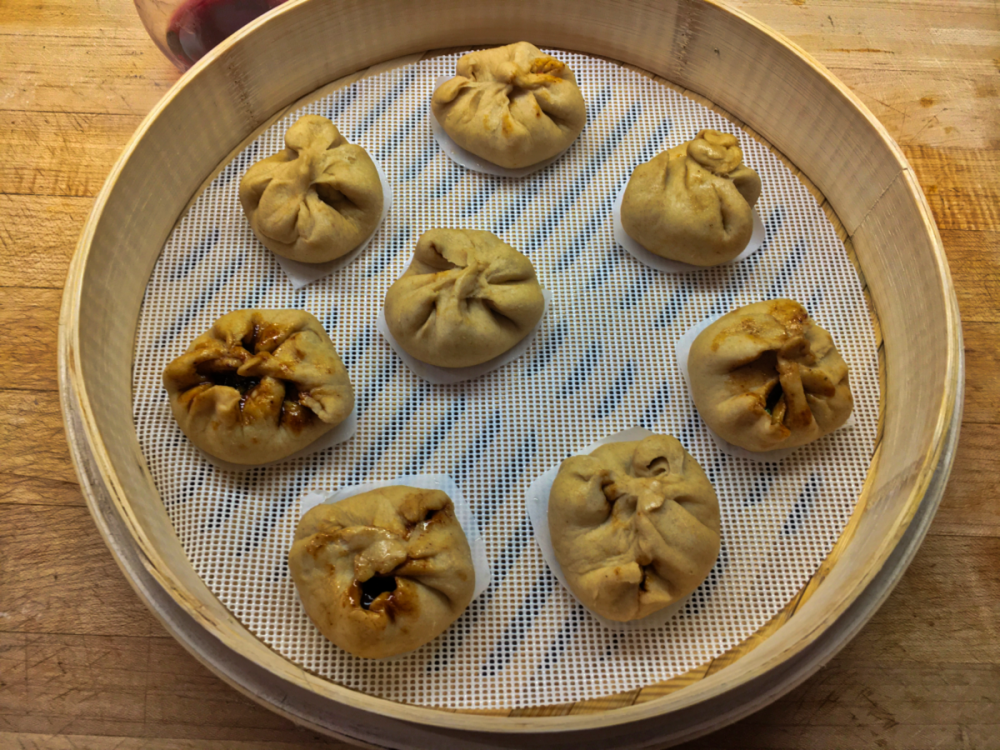
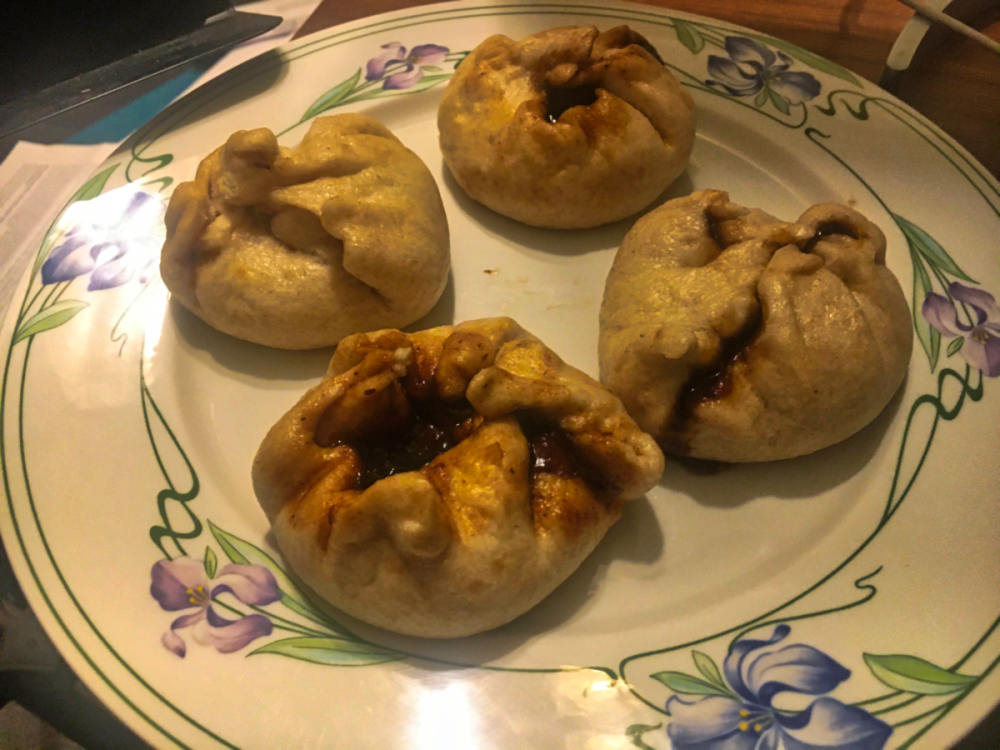

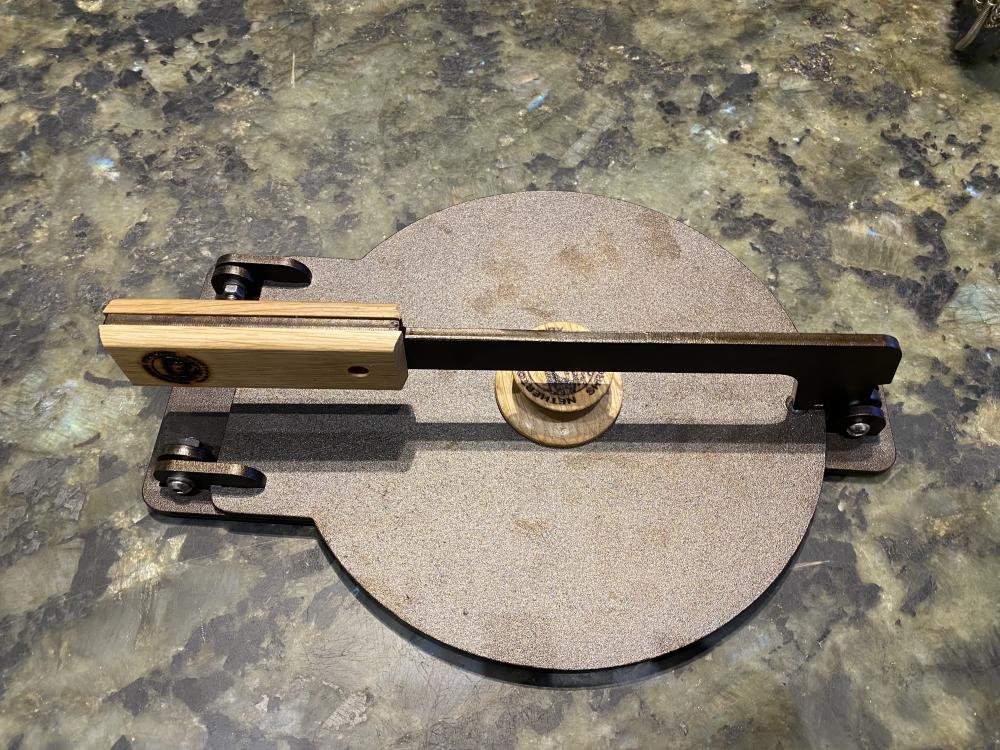
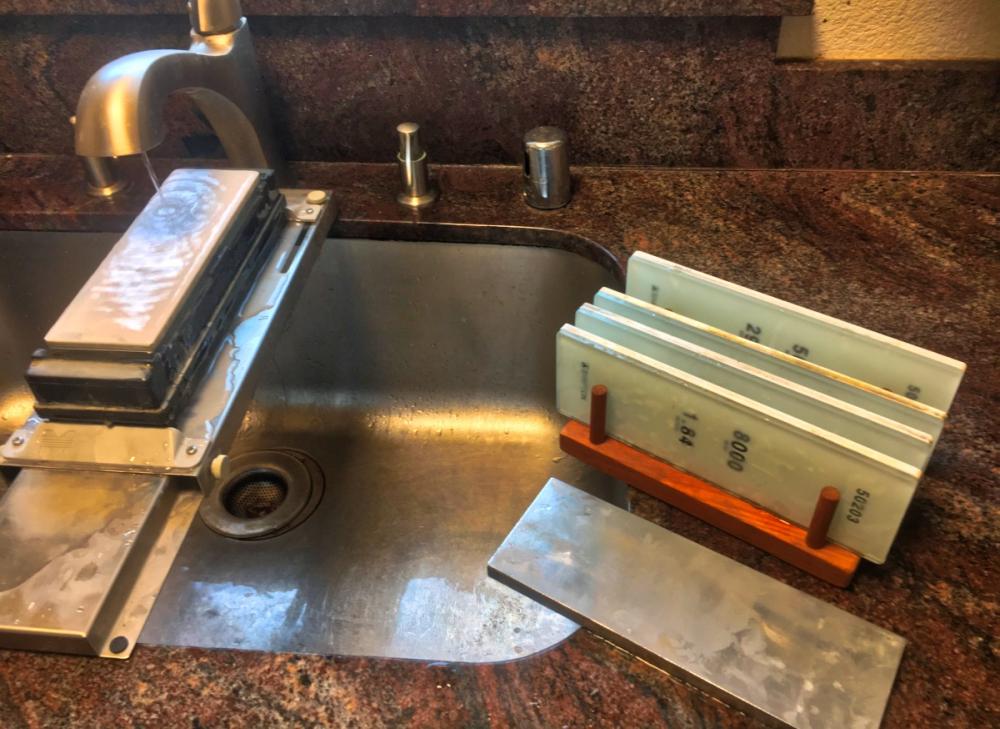
Nixtamal / masa / tacos from Masienda Oaxacan corn
in Techniques
Posted